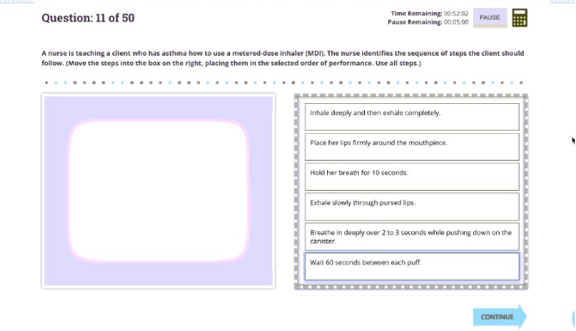The nurse assessing a client hospitalized with a diagnosis of hypoparathyroidism notes positive Trousseau's and Chvostek's signs. The nurse determines that these findings most indicate which electrolyte imbalance?
Hypernatremia
Hypermagnesemia
Hypocalcemia
Hypokalemia
The Correct Answer is C
Rationale:
A. Hypernatremia, an elevated sodium level, does not cause Trousseau's or Chvostek's signs.
B. Hypermagnesemia, an elevated magnesium level, is not associated with positive Trousseau's and Chvostek's signs.
C. Hypocalcemia, a low calcium level, is commonly associated with positive Trousseau's and Chvostek's signs. Trousseau's sign is a carpopedal spasm induced by inflating a blood pressure cuff, while Chvostek's sign is facial twitching in response to tapping over the facial nerve. Both are indicative of neuromuscular irritability due to low calcium levels.
D. Hypokalemia, a low potassium level, does not cause these specific signs and is associated with different clinical manifestations.
Free Nursing Test Bank
- Free Pharmacology Quiz 1
- Free Medical-Surgical Quiz 2
- Free Fundamentals Quiz 3
- Free Maternal-Newborn Quiz 4
- Free Anatomy and Physiology Quiz 5
- Free Obstetrics and Pediatrics Quiz 6
- Free Fluid and Electrolytes Quiz 7
- Free Community Health Quiz 8
- Free Promoting Health across the Lifespan Quiz 9
- Free Multidimensional Care Quiz 10
View Related questions
Correct Answer is ["A","B","C","D","E","F"]
Explanation
Rationale:
A: Inhale deeply and then exhale completely: This step helps to empty the lungs, making room for the medication to be inhaled effectively.
B: Place her lips firmly around the mouthpiece: Ensuring a tight seal around the mouthpiece prevents the medication from escaping and ensures proper delivery to the lungs.
C: Breathe in deeply over 2 to 3 seconds while pushing down on the canister: Coordinating the inhalation with the activation of the canister ensures that the medication is inhaled deeply into the lungs.
D: Hold her breath for 10 seconds: Holding the breath allows the medication to settle in the lungs and increase its effectiveness.
E: Exhale slowly through pursed lips: This helps to maintain the medication in the lungs for as long as possible and promotes better absorption.
F: Wait 60 seconds between each puff: Waiting between puffs allows time for the medication to take effect and ensures that the next dose will be more effective.

Correct Answer is ["C","D","E"]
Explanation
Rationale:
A. Bradycardia is not typically associated with emphysema; tachycardia is more common due to hypoxia.
B. Deep respirations are not a hallmark of emphysema; patients often have shallow, rapid breathing due to decreased lung capacity.
C. A barrel chest is a characteristic sign of emphysema, resulting from hyperinflation of the lungs over time.
D. Clubbing of the fingers can occur due to chronic hypoxia associated with emphysema.
E. Dyspnea, or difficulty breathing, is a primary symptom of emphysema due to the destruction of alveoli and reduced gas exchange.
